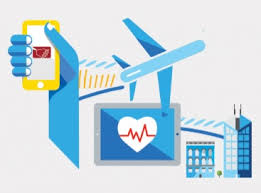 For your customers, it’s more than just connectivity
For your customers, it’s more than just connectivity
I was recently reading about the Industrial Internet of Things as it relates to my business—manufacturing software. It’s exciting that technologies are now available that will liberate manufacturers from the rigid systems and processes of the past. For today’s manufacturer, the IIoT boils down to the ability to capture and connect data from multiple sources to attain truly meaningful information.
An interesting outcome of all of this is that it’s driving manufacturers to a more service-driven model to effectively compete. Manufacturing.net noted that 77% of manufacturers polled view improvements in services as a key competitive factor. (FYI – Interesting article.) They also described this movement in a blog entry:
“In this new era, manufacturers need to look beyond the single product sale transaction into a new relationship between themselves and the consumer—characterized by an ongoing delivery of value—exchanged over a platform in the form of a smart, connected product.”
Similarly, I have found that marketing manufacturing software requires me to position our services as a differentiator. Yes, most of our products can be purchased on a Cloud-based software-as-a-service model. Today’s manufacturers, however, need more than agile software, they need long-term business partners to help them navigate the changes brought on by digitization and connectivity (e.g, the Industrial Internet of Things, the Factory of the Future and Industry 4.0).
On Board Early
It’s interesting to see manufacturers really collaborate with us during the early part of the sales cycle. Long before we get to software implementation, we work with clients to address their goals and plot a course to achieve their vision. (The Orbital ATK case study is a good example.) We draw from various tools – Lean Manufacturing, Theory of Constraints and Six Sigma – to drive a demand-driven change. (Where demand equals actual customer need.)
Our prospective clients are not looking for us to just install software and leave. They need assurance that we will be true partners; always available to not only help them get the most out of their system, but to help use their new found digitization and connectivity to best manage constraints, drive ongoing continuous improvements and make informed decisions. Francis daCosta describes this perfectly in his book, Rethinking the Internet of Things:
“With the increasing automation of the factory floor, the autonomous or semi-autonomous lower–level control and feedback loops made possible through distributed intelligence within the Internet of Things may allow for higher production and better use of human resources. If integrator functions can handle lower-level adjustments and controls of operating machinery, human eyes and minds may be freed for longer-term analysis and optimization, based on exception and historical data collected at a higher level. (p. 135).”
So, with the factory floor more digitized and your machines and systems connected, you suddenly have access to an incredible amount of data. The question then becomes how do you turn that data into meaningful information? Information that will improve workflow, pre-empt issues, lend focus to continuous improvement efforts and more? This is the service component – and where experience really counts. In many cases, we become trusted advisors to our client’s in-house teams, not just because we know the software inside-out, but because we’ve been successful with a variety of similar manufacturing environments.
Selling Consultative Value
With the rate of change brought on by the Industrial Internet of Things, connected factories will look completely different in a decade. Because our clients know that Synchrono has always been ahead of the curve, they know we are not just selling them software—we’re selling them tools to better service their customers and better compete. And we’ll be there to help them realize it.
If you are a marketer engaged in classic features-benefits selling, I would urge you to move beyond that discussion. Practically speaking, of course, these matters are extremely valuable to clients because they can check off all of the boxes on their functional requirements list – but you don’t distinguish yourself. Communicate how you will help them win in a competitive market through stellar service enabled by a more informed workforce.
Case studies provide a great vehicle for communicating service value. For example, we have service plans that build continuous improvement processes into the implementation plan. We have ROI numbers from other clients that show how much they realized in waste reduction—and also, about the time they saved through our standard integrations into their ERP.
We can plot a compelling graph that shows cost-avoidance numbers because we have helped put an end to expensive expediting in their production environment. We have testimonials from our clients’ suppliers about how their new, end-to-end eKanban inventory replenishment software repaired adversarial relationships and helped them become more responsive to customer needs.
These are just a few of the stories we tell that were a result of the added services we provide. Clearly integrating services (and their results) into your value proposition helps differentiate your company in a cluttered market.
Customers need to know they can trust us—their supply chain depends on it. Building this trust requires sharing our strong record of success with other clients. Are there unique ways that you have done that? Let me know, I’d love to hear from you.
